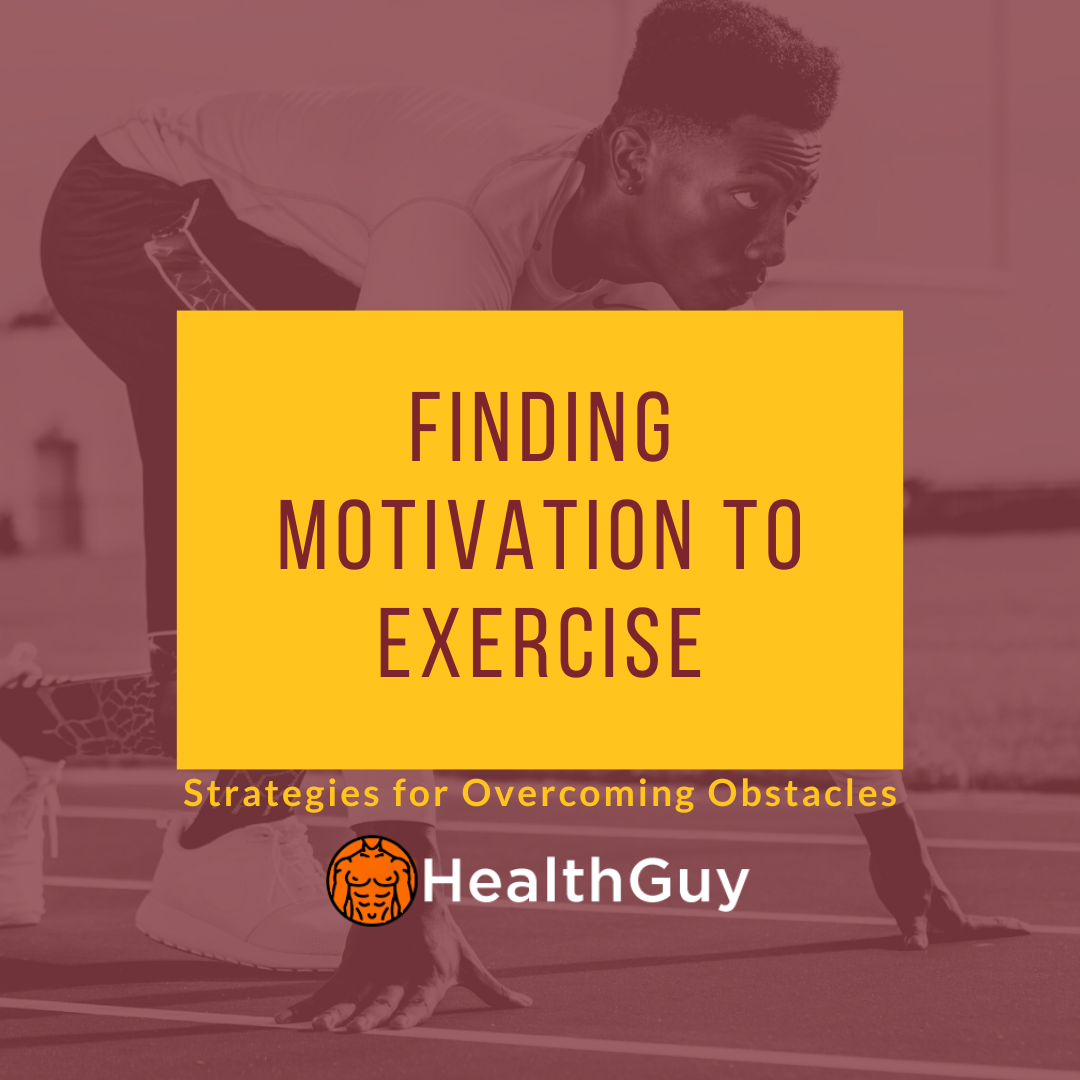
Finding Motivation to Exercise: Strategies for Overcoming Obstacles
We all know that exercise is important for our health and well-being. However, even with the best intentions, finding the motivation or time to exercise regularly can be difficult. The good news is that many common barriers to exercise can be overcome with some practical strategies and a little bit of motivation. In this article, we’ll explore some common barriers to exercise and offer tips on how to overcome them.
Barrier 1: Lack of time
One of the most common barriers to exercise is a perceived lack of time. We live in a fast-paced world where time is a precious commodity, and it can be hard to find a spare hour or two in the day to hit the gym. However, with a little bit of creativity and planning, it is possible to make time for exercise.
- Tip 1: Schedule your workouts in advance. Treat exercise like any other important appointment and make it a non-negotiable part of your day. Block off time in your calendar and stick to it as much as possible.
- Tip 2: Break up your workouts. You don’t need to do a full hour of exercise in one go. Instead, try breaking it up into smaller chunks throughout the day. For example, you could do a 15-minute workout in the morning, another 15 minutes at lunchtime, and a final 15 minutes in the evening.
- Tip 3: Make use of downtime. Look for opportunities to sneak in exercise during your day. For example, you could do some squats or lunges while waiting for the kettle to boil or do some calf raises while brushing your teeth.

Barrier 2: Lack of motivation
Another common barrier to exercise is a lack of motivation. Finding the drive to exercise can be hard when you’re tired or stressed. However, exercise is a great way to boost your mood and energy levels, so finding ways to stay motivated is important.
- Tip 1: Set realistic goals. Having a specific goal to work towards can help to keep you motivated. Make sure your goals are achievable and break them down into smaller milestones to help you stay on track.
- Tip 2: Find an exercise buddy. Working out with a friend can make exercise more enjoyable and help to keep you accountable. You could also join a class or group to meet like-minded people.
- Tip 3: Mix it up. Doing the same workout every day can quickly become boring. Try mixing up your routine by trying new activities or workouts. This can help to keep things fresh and exciting.
Barrier 3: Lack of energy
Feeling tired or fatigued can be a major barrier to exercise. However, exercise can help to boost your energy levels and reduce feelings of fatigue. Here are some tips for overcoming this barrier:
- Tip 1: Start slowly. If you’re feeling particularly tired, it’s okay to start with a gentle workout or even just a short walk. Gradually increase the intensity and duration of your workouts as you start to feel more energized.
- Tip 2: Stay hydrated. Dehydration can make you feel sluggish and tired, so make sure you’re drinking enough water throughout the day.
- Tip 3: Fuel your body properly. Eating a balanced diet with plenty of whole foods, complex carbohydrates, and lean protein can help to give you the energy you need for exercise.
Barrier 4: Lack of confidence
Feeling self-conscious or insecure about your fitness level or appearance can be a major barrier to exercise. However, it’s important to remember that everyone has to start somewhere and that regular exercise can help to improve your confidence and self-esteem. Here are some tips for overcoming this barrier:
- Tip 1: Start with exercises you feel comfortable with. If you’re new to exercise, it’s okay to start with something simple like walking or a beginner’s workout.
- Tip 2: Find a supportive community. Joining a fitness group or working with a personal trainer can help to give you the support and guidance you need to feel more confident in your workouts.
- Tip 3: Focus on your progress. Celebrate the small victories, such as running a little farther or lifting a little more weight. These small successes can help to build your confidence and keep you motivated.
Barrier 5: Lack of resources
Not having access to a gym or equipment can be a major barrier to exercise. However, there are plenty of exercises that can be done with little or no equipment. Here are some tips for overcoming this barrier:
- Tip 1: Use your body weight. Exercises like push-ups, squats, and lunges can all be done using just your body weight.
- Tip 2: Get creative with household objects. You can use things like water bottles, cans of food, or even a chair for exercises like bicep curls, tricep dips, or step-ups.
- Tip 3: Take advantage of the outdoors. Walking, running, hiking, or cycling are all great ways to get exercise outside without needing any equipment.
Remember, the most important thing is to find an exercise routine that works for you and fits into your lifestyle. With a little bit of creativity and motivation, you can overcome common barriers to exercise and start reaping the many benefits of regular physical activity.
In conclusion, there are many barriers to exercise, but with a little bit of planning, creativity, and motivation, they can be overcome. By making exercise a priority, setting realistic goals, finding ways to stay motivated, and mixing up your routine, you can make regular exercise a part of your daily life. Remember, every little bit counts, so don’t be too hard on yourself. Keep moving, stay positive, and enjoy the journey.
